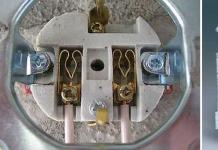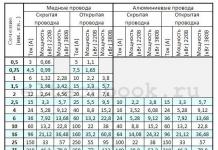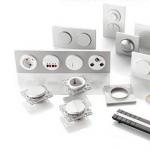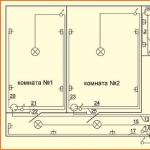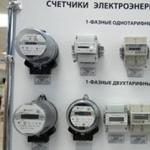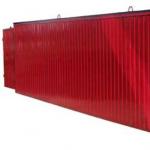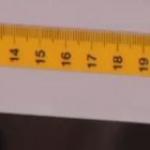Sweet peppers in the country are grown less often than cucumbers and tomatoes. Meanwhile, there is absolutely no special wisdom in obtaining large yields of this vegetable. And although this is a fairly thermophilic crop, with the right approach, peppers can be successfully grown in the Middle lane.
PREPARATION OF PEPPER SEEDS FOR SOWING
The ripening period of peppers from the moment of germination to the harvest of fruits is: for early varieties 80-100 days, for late ones - 120-140 days, so you can start thinking about seedlings in late February - early March.
Seeds should be planted 55-60 days before planting seedlings in the ground. If planted earlier, the plants will stretch, weaken and take root poorly, which cannot but affect the future harvest.
Pre-seeds are best prepared. For this, 1 tsp. potassium permanganate dissolve in 1 liter of hot water. Pour seeds for half an hour 3 tbsp. l. warm solution and then rinse with warm water. After that, you can still fill them for 12 hours with a solution of heteroauxin - take 1 tablet per 1 liter of water. After that, place the seed in a canvas bag and put it in the snow at night, and keep it in the room during the day. 5-6 days of such hardening is enough. At this time, it is necessary to ensure that the seeds do not dry out, do not germinate and do not suffocate. After hardening, dry the seeds thoroughly before planting or sow immediately - whichever is more convenient.
PEPPER PLANTING
Soil for seedlings is best prepared on the basis of peat. If there is no peat, you can take humus. So, to 2 parts of humus (peat) add 1 part of sod land, 1 part of sawdust. Sawdust must first be shed with a solution of ammonium nitrate (a glass of nitrate in a bucket of water).
Sawdust should be moistened with this solution for 2 weeks. Then all the components must be mixed, add 1 tbsp. n. superphosphate. 2 tbsp. l. ash - and the soil for seedlings is ready. An operation with sawdust is needed so that the seedlings grow strong and do not experience nitrogen starvation, in which the leaves become pale and the plants themselves are weak.
Seeds can be sown in individual pots or in trays (boxes). In the second option, the distance between the rows should be 3-4 cm. It is not worth planting the seed deep - 1 cm from above is enough. Before the appearance of friendly shoots, it is better to cover the crops with plastic wrap.
As soon as the seeds sprout, the boxes should be placed on a cool windowsill for several days. Then you can transfer to a warm place where the temperature is kept at 25 °. As soon as the first true leaf appears, the peppers should be dived.
PEPPER SEEDLING CARE
Every 12 days, peppers should be fed with complex fertilizer, starting from the time the second leaf appears. A total of 3 dressings should be done. If there are signs of nitrogen starvation, it is best to feed the plants with chicken manure - 0.5 l of manure is taken per bucket of water.
As the plant develops, it needs to be shaped - leave the 2 strongest shoots to model the skeleton of the bush, and pinch the weak branches after the appearance of 12 leaves.
As soon as the plant develops more than 7 leaves, and they are strong enough (and this will happen in 50-60 days), the seedlings can be planted in a greenhouse or open ground.
It is worth knowing that peppers are capricious and demanding. They do not restore the root system well, do not like transplants, and take root slowly. Therefore, many gardeners exclude the dive operation and plant non-dive plants.
Good strong seedlings are plants 20-25 cm high with 5-10 leaves and a strong stem 3-4 mm thick at the roots.
MAY WORRY
In May, it's time to prepare the land for peppers, if it has not been prepared since autumn. Peppers feel best in the beds after cucumbers and cabbage. They do not tolerate fresh manure - it is better to take rotted compost and bring it into the ground - 1 sq. m 1 bucket of manure, 50-60 g of superphosphate, 20 g of potassium salt.
Planting in the ground or in a greenhouse should begin when the air temperature reaches 15 °. Frosts are detrimental to peppers, so plants should not be planted before the end of May.
Peppers love moisture, so they need to be well watered before transplanting.
For planting, it is better to choose a cool overcast day. Plants should be carefully removed from the boxes, being careful not to disturb the roots. It is optimal to plant peppers and peat cups and plant them in the ground together - then the peppers will hurt less.
Ideally, the distance between rows should be 50 cm, between plants - 30 cm. Plants should be planted in separate, well-spilled holes. It is impossible to deepen the peppers when planting: from this they begin to hurt and dry. It is necessary to sprinkle with earth to the first leaves. But if you plant peppers at a very shallow depth, then the upper roots will begin to die off, and this should not be allowed.
It is important to plant sweet and bitter peppers as far apart as possible so that cross-pollination does not occur. Otherwise, sweet peppers will be bitter, and bitter ones will not please with spiciness.
The ground around the plants can be mulched with straw or grass so that the ground retains moisture longer and there are fewer weeds.
After planting, you should especially carefully monitor the moisture content of the earth. Peppers do not like dryness. They need to be watered often and regularly, but not too plentifully.
If you pour peppers, then they can be affected by blossom end rot. If the peppers dry out, especially during the period of tying peppers, then subsequently the fruits will have a bitter taste. It is best to water in the morning, pour water gently, under the root.
The water should be warm - from cold water, peppers stop growing, yields decrease. In the first days after planting, watering should be frequent. Then you can water every 10 days.
You need to loosen the aisles more often, a couple of days after watering. These procedures provide air access to the roots. But since the roots of the peppers are close to the surface, loosening should be shallow - no deeper than 6 cm.
15 days after planting, the plants should be fed for the first time with complex mineral fertilizers. To do this, you need to take 1 kg of mullein and mix it with 10 liters of water, in which 30 g of superphosphate are dissolved.
This solution is enough for 1 sq. m beds. You can also take chicken manure in the proportion already indicated above.
SUMMER PEPPER CARE
In summer, you need to feed the plants several more times with a mixture of mullein and superphosphate. Apply 0.5 l of the mixture per 1 plant. The next top dressing must be done through
2 weeks. On a bucket of water, take 2 tbsp. l. nitrophoska and water the plants with this mixture. The main thing is that the solution does not get on the leaves, for this it must be carefully poured under the root. Otherwise, burns will appear on the leaves.
If necessary, you can feed the plants a couple more times. All top dressing is carried out at night, on wet ground.
When flowers appear, peppers should be monitored especially carefully. If it gets too hot (more than 33-34 °), then the flowers may fall off, and the peppers will wilt, so it is best to shade the plants in strong heat.
It is better to tear off the first flower that appears so that the peppers do not deplete their strength and development is not delayed.
ABOUT PEPPER DISEASES AND FIGHTING THEM
Although with proper agricultural technology the risk of diseases is minimized, peppers are still not immune from various infections.
Most often, plants are affected by late blight, fusarium, brown spot, black fruit rot, black leg. Almost all of these diseases are fungal in nature.
Diseases such as mosaic are caused by viruses. Blossom end rot, when plants begin to rot, appears due to errors in watering and care.
To protect plants from black rot, before planting seedlings, it is necessary to pickle the seeds with potassium permanganate according to the scheme indicated above, and do not plant peppers in the garden after nightshade.
With a black leg, rot of the root part of the plant appears, which leads to its death. The affected peppers should be removed immediately, and the beds with the remaining ones should be poured with a 3% solution of copper sulfate and sprinkled with ash.
From phytophthora, spraying with infusion of garlic helps.
To do this, mix 100-150 g of crushed dry leaves or flakes of garlic heads in 10 liters of water, leave for a day and spray the plant with this solution. You can also use 1% Bordeaux liquid. To prevent late blight, peppers should be planted away from tomatoes and potatoes.
In greenhouses, peppers are most often affected by gray rot. This is usually due to high humidity. Therefore, for the purpose of prevention in greenhouses, it is necessary to regularly ventilate the premises and plant peppers at large intervals between each other.
PEPPER HARVEST
Peppers accumulate vitamins until the seeds ripen. Therefore, there are more vitamins in ripened red and yellow peppers than in green ones.
Ripe peppers should be carefully cut with secateurs. Cutting off the fruits, as many mistakenly do, can damage a fragile plant. It is important to regularly remove the fruits as they ripen, without leaving them on the bush.
If ripened fruits remain on it for a long time, then the plant ceases to bloom and give new ovaries. If you remove the peppers on time, then the plant blooms and bears fruit further.
If frosts begin, and ground peppers have not yet fully ripened, it is best to tear the plants out of the ground with roots and hang them in a warm place. The peppers will soon ripen on their own.
There is another way - in the fall, peppers can be dug up and transplanted into a pot. At home on the windowsill, they will grow and bear fruit until next summer (after all, this is a perennial plant).
Peppers are responsive to care. If you put your soul into them, they will amaze with their productivity and rich taste. Dare!
Growing pepper - sharing experience
Vegetables are golden
I also want to talk about pepper, although a lot has already been written about it. But how many gardeners, so many secrets. So, in order.
As I wrote earlier, we take the land at the dacha, in the village, in a ravine under nettles. We pour it into bags, bring it home and put it on the loggia. Although it is glazed, it is not insulated, so the ground freezes. I don’t plant seedlings early, although I tried it in mid-February, and at the end, and at the beginning of March, but stopped at the date of March 10. We plant peppers in the ground on May 10-15 under double acrylic, the densest. Therefore, even if there is a frost, they still will not freeze. By this time, the peppers grow up to 30-35 cm - strong, the leaves are large, green, the bush is all in buds and - most importantly - does not bloom, literally 2-3 flowers, and that's it. And here are my boarding rules.
In mid-February, we bring the earth from the loggia into the common corridor, where it stands until March 1 and thaws during this time. And on the 1st, I pour it into a basin, add a full handful of ash, mix it up and pour it into seedling boxes. Then I spill it with a hot pink solution of potassium permanganate. Until March 10, the boxes are in the corridor in the apartment. During this time, the earth has time to rest and dry a little. I loosen it, slap it lightly "and make two grooves, spill it with a slightly warm pinkish
solution of potassium permanganate and lay the seeds. I pre-etch the seeds in a dark solution of manganese and, without washing, plant them. I don’t do any more manipulations with them - I think that if the seeds are good, then they will sprout successfully, but why revive dead ones?
I have my own seeds, so I plant them after 1 cm. Those that germinate later than necessary, I remove, and my own seeds germinate literally in 5-7 days. All this time, the boxes are on the table by the window, covered with polyethylene, secured with an elastic band.
From time to time I buy new seeds in the store. Those that suit me, I leave, the rest I remove. Two years ago, yellow pepper seeds were purchased - White Gold, Golden Calf and Bugai. I don't have any photos, but they are exactly what they say on the packages, just bigger. The varieties Titan and Atlant have proven themselves well. They are all beautiful, very large and very sweet.
This is how I grow seedlings, everything is very simple, by March 20 all the seeds germinate. And on April 5, transplantation begins. I transplant into 400-gram cups from sour cream. And here is the most important thing - I will definitely dive them.
For what? Yes, many argue that pepper should not be dived, but I believe that if this is not done, the pepper will start growing too quickly and by the time of planting it will be very tall and bloom, but this is just undesirable! No matter how carefully we transplant the pepper, if it is already blooming profusely, its color is all the same, though not all, but it will fall off, and we do not need this.
When I dive, in the first week the pepper seems to freeze, it does not grow. By the end of the second week, it begins to move a little, and only by the end of the third week, growth resumes. This is approximately April 24-26. Before planting in the ground under the film on May 12-15, three weeks remain - quite enough. Pepper manages to grow up, because by age he is no longer young.
medicine for prevention
And the transition is very easy. We dig holes, take out sprouts from cups, plant and water. We do not add any fertilizer. And only after a week, when the peppers finally get stronger, we feed them when watering. By this time, we already have fertilizer ready. We prepare it like this: in a 200-liter barrel we put 1 bucket of manure, 1 pack of granulated chicken manure, leftover yeast, jam, pieces of half-eaten bread, grown nettles. All this roams for 2-3 weeks - and you're done.
But I add such fertilizer not 1 liter per bucket, but 0.5 liters. But every week (1 time). And the watering itself, if the weather is hot and dry, is done every other day or every day, but literally 0.7 liters each, since the pepper has a superficial root system and this amount of moisture is enough for it.
Two weeks after planting, I spray the peppers once with a solution of zircon. I read in one magazine that this is a natural preparation - an extract from the herb Echinacea purpurea, which is a medicinal plant. I always have a lot of pepper, every year, and I did not count.
Only in 2013 I decided to count. From 72 bushes, we collected almost five bags - those in which sugar is sold in 50 kg. And two more buckets, but smaller, although red. And in the bags, the pepper was not just large, but directly huge, red, yellow and very sweet! For us it was too much, we had to sell. They took it with pleasure.
I make a lot of blanks from pepper: pickle, cook adjika, lecho, freeze. In general, we have a garden of 17 acres, so we grow everything that is needed and what is possible, and we are not afraid of any food sanctions!
I wish all readers health, success on the dacha front, and the respected editors also have the patience to sort out our scribbles.
ORDER QUALITY AND CHEAP SEEDS AND OTHER PRODUCTS FOR HOME AND COTTAGE. PRICES CHEAP. CHECKED! JUST SEE FOR YOURSELF AND BE SURPRISED HOW WE HAVE REVIEWS. GO>>>: Their seeds from their tomatoes To each ...
Sweet pepper cultivation: preparation and planting of sweet pepper seedlings, diving, planting in the ground, conditions for growing sweet pepper - soil requirements, temperature conditions, etc., bush formation, fertilizers and preparations to stimulate growth

I tried to write an article about sweet pepper, which widely covers the agricultural technology of growing this crop.

Briefly and concisely: preparation and planting of sweet pepper seedlings, diving, planting in the ground, growing conditions for sweet pepper - soil requirements, temperature conditions, etc., bush formation, fertilizers and preparations to stimulate growth, control of pests and diseases of sweet pepper.
The cultivation of sweet pepper, a rather whimsical culture, has many nuances and subtleties. What does a novice summer resident need to know, what is important for an experienced farmer to remember?
General information
- Capsicum pepper belongs to the nightshade family, its varieties and hybrids belong to the species Capsicum annuum.
- Perennial plant, grown as an annual crop.
- According to the content of the alkaloid capsaicin, the substance responsible for the pleasant bitterness of fruits, there are sweet (spicy) varieties of pepper and hot (bitter).
- The growing season is 120-170 days, depending on the variety, the optimum temperature is 19-27 °C.
- The cultivation of sweet pepper is practiced by the seedling method both in open ground and in closed ground - in greenhouses, greenhouses. In the southern regions, it is possible to grow from seeds, in the northern regions - by seedlings exclusively in protected ground.

Seeds obtained last season are suitable for planting due to the low keeping quality of seed material. It is advisable to plant pepper on seedlings at the end of March - in the first decade of April. The optimum germination temperature is 17-22°C, the minimum is 16-19°C.
Substrate requirement: light and enriched, the optimal composition is humus, soddy soil, sand or peat in equal parts, it is useful to add wood ash at the rate of 1 cup per bucket of the finished mixture. Before germination, crops are covered with a film or glass, which are lifted or dried daily to eliminate condensate.
Preliminary preparation of seeds includes calibration in water (selection of small, empty seeds), dressing in a 2% solution of potassium permanganate for 15-20 minutes, soaking the seeds. Purchased seed material most often does not need calibration and processing, but you need to study the annotation on the package.
Landing is carried out to a depth of 1-2 cm by a continuous method, at the rate of 3-5 g per 1 sq.m with a soil layer thickness of 12-15 cm.
The thermal regime depends on the age of the seedlings. Until the first sprouts appear, the air temperature is maintained at 25-30 ° C, the soil temperature is 13-16 ° C, after germination for 5-7 days 13-15 ° C, after picking it is maintained at 20-25 ° C during the day and 12-15 ° C at night.
Dive is carried out 20-30 days after germination: the central root process is shortened by 1-1.5 cm, then the plants are planted in cassettes or cups. This is done for greater growth of root processes.
Cultivation without a dive, in a cassette way, when 1-2 seeds are placed in each cell, has its advantages: there is no growth retardation and stress accompanying transplantation, and its disadvantages - a lower capacity of the root system. However, this shortcoming pays off by advancing growth and development in comparison with dived seedlings.
Watering seedlings as they dry, on average after 1-2 days, waterlogging of the soil is unacceptable. It is advisable to double weekly top dressing with calcium nitrate at the rate of 1 g / 1 liter of water or other complex fertilizer. Without picking, pepper seedlings are grown up to 50 days, with picking - 60-70 days.

It is possible to plant plants in open ground after the appearance of 5-7 true leaves. For better rooting and stress smoothing, 2-3 days before planting, the seedlings are “hardened” by lowering the air temperature to 10-15 ° C for 5-7 hours, then complex fertilizer is applied for a day, 3 days before. When transplanting, foliar top dressing with potassium humate, biostimulants, especially sensitive varieties and hybrids with Epin, Megafon, Mars, etc., is useful.
Light loam, sandy soil - the best option for sweet pepper. It is important to place the beds in a well-lit, well-heated area, preferably on a southern slope, inaccessible to cold winds.
Plants are planted in abundantly watered holes 7-8 cm deep. Planting depth - deepening the root neck no deeper than 1-2 cm to avoid diseases and decay. The minimum area for one seedling is 50x35 cm, 4-5 plants per 1 sq.m. Effective planting pattern: row spacing 50-60 cm, 40-50 cm in a row, with drip irrigation 70-90 cm for row spacing and 40-50 cm in a row.
In the southern regions, where "seedless" cultivation of sweet pepper is practiced, seeds are sown when the soil warms up to 15-18 ° C. At a seedling height of 15-17 cm, the growth point, the tip, is pinched for the growth of side shoots.

The culture is extremely sensitive to watering. Drying out is unacceptable, as is excessive moisture, leading to a lack of oxygen, slowing down fruit ripening. With an excess of moisture, the tops of the seedlings darken, wilting is noted. Lack of moisture can be determined by falling leaves, ovary, development of apical rot, also associated with a lack of calcium, incomplete ripening of sweet pepper fruits.
The first watering is carried out 7-10 days after planting, in the future, the rate of a single irrigation is 3-5 liters per plant.
Responsive to soil density: after each watering, loosening to a depth of 7-8 cm is necessary.
It is important to observe the temperature: 20-25 ° C is considered optimal, frost is fatal: with a noticeable decrease in temperature, the beds are covered with a film, light agrofiber.
An important role is played by the formation of the bush. Removal of stepchildren, unproductive shoots, lower leaves is necessary to reduce the load. It is believed that it is necessary to remove the first main bud to stimulate the growth of green mass and increase productivity.
In tall varieties, two or three stems can be formed, formed from the upper stepsons, which in this case should not be cut off, pinching the shoots above the second and third leaves.
Root top dressing and foliar top dressing, on a sheet, begin after 2 weeks of growth in open ground. Pepper is picky about the high content of magnesium and potassium in the soil, the lack of which reacts with top rot of the fruit. Therefore, the “traditional” top dressing is calcium nitrate, a potassium-phosphorus complex.
Of the "good old" - sodium humate, nitroammophoska, wood ash. The modern technology of growing pepper involves combined nutrition: fertilizer with a frequency of 10-12 days with complex preparations of Kemira, Master, Rostkontsenrat, Carbamide, soil enrichment with organic matter - manure, bird droppings. Good results are given by biostimulants Epin, Radipharm, etc.
Weeding, weed control, row spacing loosening - the main care differs little from other crops. It is worth mentioning that undersized varieties do not need support, tall ones are tied to pegs or a trellis like tomatoes, curly beans.

The main pests are scoops, May beetle larvae, Colorado potato beetle, aphids, whitefly, thrips.
Common sweet pepper diseases are verticillium wilt, rot, including apical rot, bacteriosis, viral diseases, alternariosis.
As control measures, in addition to organic preparations of copper, sulfur - copper sulfate, Bordeaux mixture and others, it is effective to use modern fungicides, microbiological preparations: Actofit, Actellik against pests, Trichodermin against fungal diseases, complex preparations Gaupsin, Fitosporin and others.
The fruits of sweet pepper are harvested both in technical (with possible subsequent ripening) and biological (final) ripeness, cut off with the stalk. For storage in refrigerators packing boxes, polyethylene perforated bags are used. At a temperature of 0 + 2 ° C, pepper can be stored for 20-25 days.
Let's hope that my advice will be useful to everyone who is interested in growing sweet peppers, an indispensable crop and garden decoration. If I missed something, please leave additions or comments in the comments.
Good harvest to you!
Sweet pepper is a very popular vegetable crop, it contains a large amount of vitamins and amino acids. It can be used with meat dishes, steamed, boiled, fried, canned.

The benefits of sweet pepper are that it: strengthens the immune system, improves hair, eyesight, lowers blood pressure.
How to grow sweet peppers? In open ground. Gardeners in central Russia grow pepper seedlings. The period from germination to harvest is about 140 days. Seedlings at the stage of bud development at the age of 70 days are planted in a greenhouse or in open ground.
To grow seedlings by early June, you need to sow pepper seeds in early March.
If there is a greenhouse or the opportunity to cover the bed with a film, then the seeds can be sown in February.

The scheme of planting sweet pepper.
Seeds must be prepared before planting. First, they are sorted by immersion in salted water and stirring. Floated seeds are underweight, they are of poor quality, so they are removed. The rest are washed and disinfected in a 1% solution of potassium permanganate. Then they are washed again and enriched with mineral fertilizers. A mixture of mineral fertilizers can be bought in specialized stores. Seeds are soaked for a day in a solution containing fertilizers. They need to be treated by bubbling, that is, immersion in water, which is blown with air. This processing takes place within two days. Next, the seeds are placed on a damp cloth and placed in a warm place with a temperature of about 30 degrees. After they begin to peck, you need to place them in the soil to a depth of 1.5 cm.
The stage of picking peppers is different from other vegetables. Many gardeners recommend transplanting two plants into pots at once. Peppers are cross-pollinated crops, so planting them in pairs helps increase yields.
The choice of a particular variety of sweet pepper depends on the purpose of the fruit and on your taste. If peppers will be consumed more often fresh, then it is advisable to choose varieties with larger fruits. These are varieties such as the Gift of Moldova, California Miracle, Winnie the Pooh. These varieties require special growing conditions. If the fruits are going to be preserved, then small-fruited varieties are more suitable - Merchant, Topolin. They are not so capricious and do not require comfortable growing conditions. When planting, you can use the seeds of mature large fruits. How many pepper bushes should be on the site, you need to decide individually. To use the fruits for cooking and canning for the winter, 20-25 plant bushes are usually enough for an average family.
Back to index
Growing seedlings

Table of indoor air temperature when growing seedlings.
When the seedlings have two true leaves, they need to be transplanted into separate pots. When diving, seedlings do not need to be deepened too much. Sometimes you can do without diving. You can sow seeds directly into pots. As the seedlings grow, you need to transplant the sprouts into larger pots without damaging their roots. The weaker plants are then removed. This method is more efficient. The picking of pepper somewhat delays the growth of plants.
In the process of growing seedlings, she needs strong lighting. Before planting in the soil, it is necessary to harden the sprouts under the sun. If, before planting, the seedlings have never been under the rays of the sun, then it can burn out after it is transplanted into open ground. Therefore, you need to periodically take out seedlings in the sun. First - for an hour, then - for a longer time, then - for the whole day. At night, you need to bring the seedlings to a warm place.
Pepper is a fairly hardy plant. In hot countries, it is grown as a perennial crop. It regenerates well, tolerates pruning well, is in a constant alternation of flowering, fruiting and ripening stages. In regions with frosty winters, this is not possible, so pepper is grown as an annual plant. However, in the presence of a greenhouse, a long-term method of cultivating a crop can be used.
Peppers are planted in open ground in early June, in a greenhouse - in early May. It is better to plant peppers in the ground where crops such as radish, turnip, radish, cabbage grew before. It is not recommended to plant them in the soil where the tomato grew. The soil must be fertilized before planting. The best soil for the cultivation of sweet peppers are sandy-clay soils that contain a lot of humus.
Back to index
Features of the cultivation of sweet pepper

The following varieties of bell pepper are distinguished: corvette, mirage, player, dawn, Atlantic, cardinal, orange miracle, red elephant, yolo-miracle, California miracle, newt, gift from Moldova, sweet banana, ox's ear.
How to grow sweet peppers? When choosing a site for your garden, you need to consider that the pepper should be constantly in the sun. In addition, it does not tolerate strong winds. The best place for pepper is south of the building, where it will be protected from the wind and receive additional lighting reflected by the wall of the house. You can create wind protection for plants from a film or wattle.
Sweet pepper does not tolerate cold soil. The soil temperature must be at least 20 degrees. If you want to get a good harvest, then you need to raise the beds by 40 cm or create subsoil heating. The soil should not be too dense, especially if it contains a lot of clay.
Pepper loves heat, sun and medium humidity. In a greenhouse, it can be grown along with tomatoes, only a bed with peppers needs to be watered more often. It is not necessary to overheat the bushes during flowering, as this can cause the flowers to wilt. The most favorable temperature for flowering is 25 degrees. When fruits appear, the plants need to be fertilized. Top dressing should contain a lot of calcium and nitrogen.
Peppers should be planted in beds at a distance of 40 cm from each other. For each plant, you need to install a support that is tied to the stem at the level of the main fork. If there is little space on the site, a thickened planting method can be used. The fruits will be smaller, but their number will be large.
Peppers need to be cut several times during the growing season. At the same time, the longest shoots are cut. Remove branches inside the bush and branches of branches located below the main fork. Pruning is done after picking peppers, once a week. If mature fruits are harvested on time, then this favors the growth of the ovary and new fruits.
When grown in open soil, pepper is a rather whimsical crop. But this is compensated by its wonderful taste, bright colors that give any dish a festive look, and an abundance of vitamins.
Unlike many vegetables that are successfully grown by gardeners in central Russia on their personal plots, pepper makes much higher demands on temperature and soil fertility. This culture is characterized by a slow growth rate, so it is possible to get a full harvest only when growing seedlings. And even in this case, heat-loving peppers will need shelter from the night coolness.
Nevertheless, despite the complexity of agricultural technology, many enthusiasts very successfully grow this valuable and tasty vegetable in their beds, not only in the Non-Black Earth Region, but even in more northern regions.
Proper soil for seedlings
One of the main components of growing strong seedlings of pepper is the preparation of suitable soil. It must meet several basic criteria.
- The soil for the vegetable should be breathable and moisture-absorbing. Such characteristics can be achieved if you prepare a mixture of equal parts of humus, rotted sawdust (can be replaced with sand) and peat, as well as two parts of sod land after pumpkin, legumes or root crops. It is possible to increase the moisture capacity of the substrate with the help of a hydrogel, which, when applied to the soil, retains nutrients and accumulates moisture. However, the soil becomes much looser, and the amount of watering can be reduced.
- The soil mixture for seedlings should be nutritious. The addition of wood ash or rotted manure, which can be replaced with mineral fertilizers (ammonium and potassium nitrate and superphosphate), has a positive effect on the vegetation of plants. Chlorine-containing fertilizers should not be used, as they harm the root system of peppers, but excess nitrogen in the soil is not dangerous for the crop, since peppers are not prone to stretching.
- Vegetable crop is very sensitive to soil acidity and prefers its neutral values. At pH
- Before filling containers for seedlings, it is recommended that the prepared soil mixture be disinfected by heat treatment (steaming or calcining). In addition, before planting, the soil can be treated with a solution of potassium permanganate.
Soil at a permanent place of cultivation
Seedlings at the age of 2 months are planted in a permanent place, which is prepared in the fall. The soil should be nutritious, loose enough and at the same time retain moisture well.
- The site is chosen in a warm and sunny place. If landing in open ground is planned, and not in a greenhouse, then protection from the winds prevailing in your area should be provided. It can be either a wall of a neighboring building, a green fence or a fence, or a specially erected fence.
- After harvesting, all plant debris is carefully removed and the soil is dug deep.
- To increase fertility in the fall, it is necessary to introduce organic matter in the form of humus or rotted manure. It is categorically not recommended to add fresh manure to the soil for peppers, since an excess of nitrogen will lead to an increase in green mass and inhibition of flowering, and, consequently, fruiting.
- Superphosphate and wood ash are added as mineral supplements.
- If necessary, measures are taken to reduce the acidity of the soil to pH values \u003e 5.5. To do this, use dolomite flour or lime.
- It is not recommended to plant peppers after any nightshade crops, as pathogens common to them can remain in the soil from previous seasons.
- In the spring, the site is dug up again, but not deep, and fertilizers are added containing phosphorus, potassium and nitrogen compounds in a ratio of 2:2:1, respectively.
